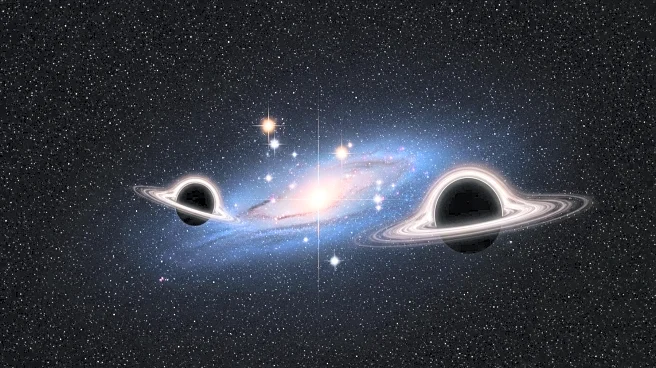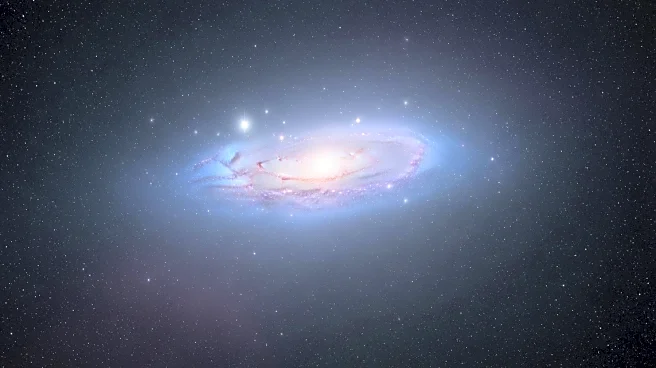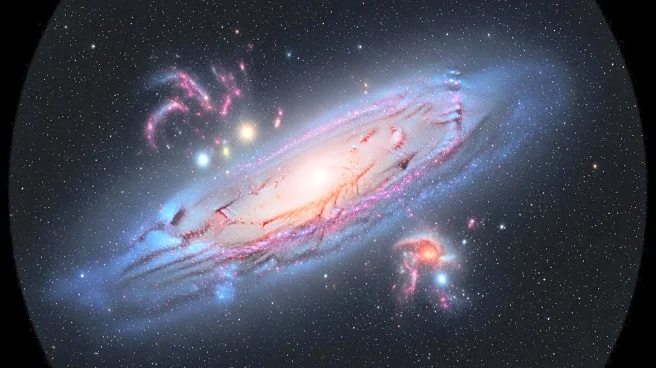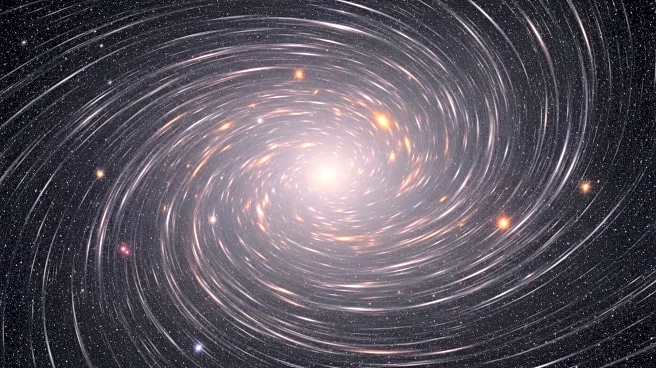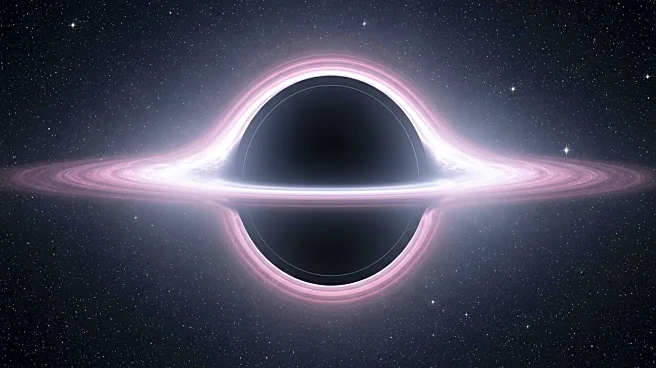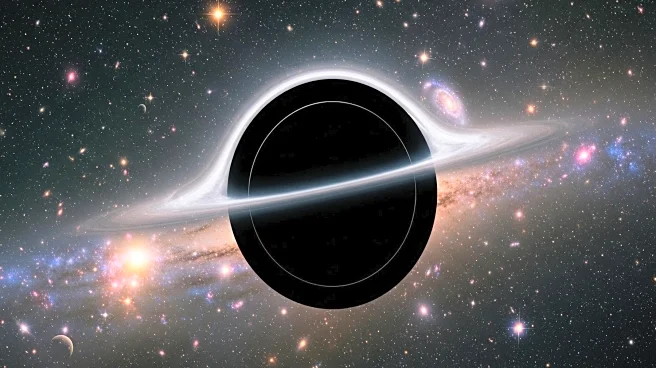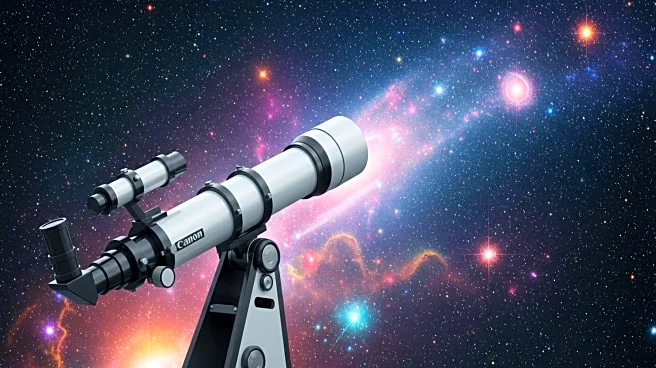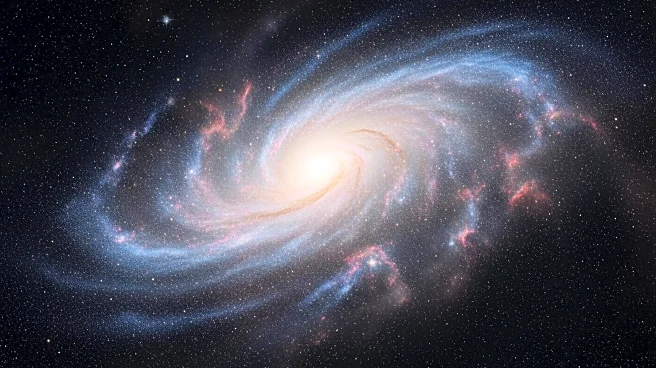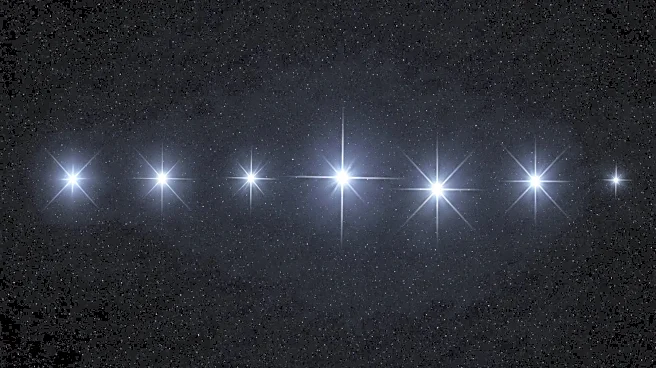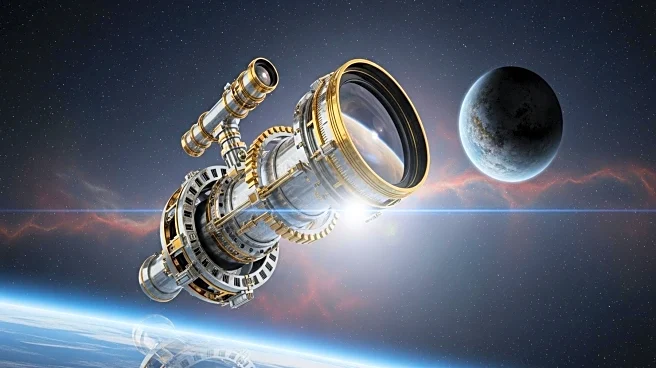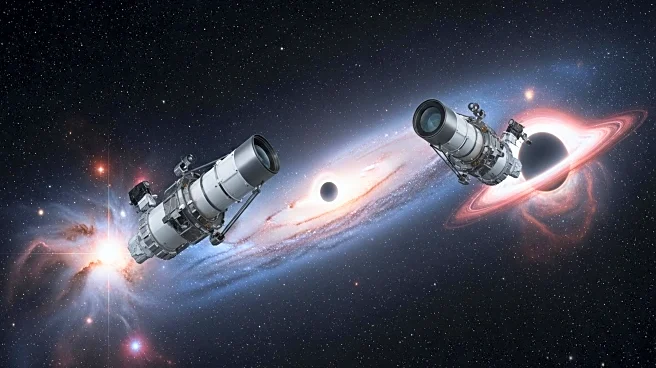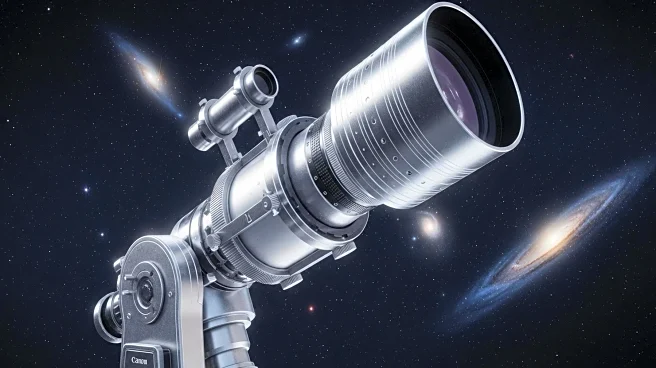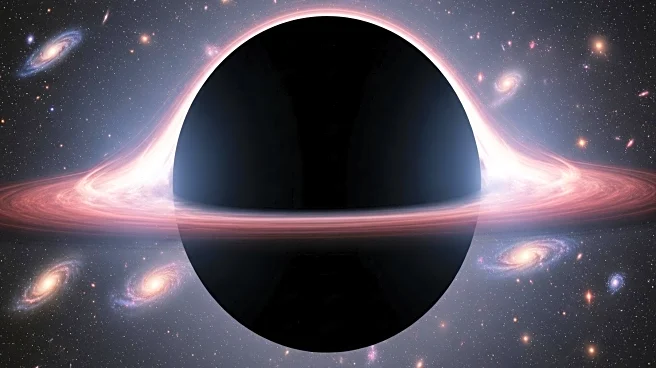What is the story about?
What's Happening?
Recent studies have revealed that nearly 2% of observed dwarf galaxies host central black holes, a significant increase from previous estimates of 0.5%. These findings suggest a larger, undetected population of intermediate-mass black holes (IMBHs) within dwarf galaxies. IMBHs bridge the mass gap between stellar-mass and supermassive black holes, offering insights into the formation and evolution of supermassive black holes. Improved observational techniques, including those utilizing the James Webb Space Telescope, are enhancing the detection of IMBH candidates in both nearby and distant dwarf galaxies.
Why It's Important?
The discovery of black holes in dwarf galaxies is crucial for understanding the origins of supermassive black holes, like the one at the center of the Milky Way. These findings could help astronomers uncover the formation processes of the first black holes in the universe and their interactions with host galaxies. The presence of IMBHs in dwarf galaxies may influence galactic growth and evolution over cosmic time, providing vital information for astrophysical research.
What's Next?
Astronomers will continue to use advanced telescopes to detect more IMBHs and map their masses, further unraveling the mysteries of black hole formation. As technology improves, researchers anticipate discovering more black holes within dwarf galaxies, potentially leading to breakthroughs in understanding galactic evolution and the role of black holes in cosmic history.
AI Generated Content
Do you find this article useful?
